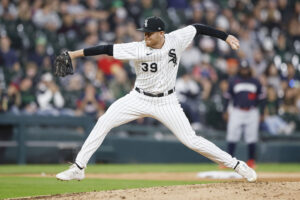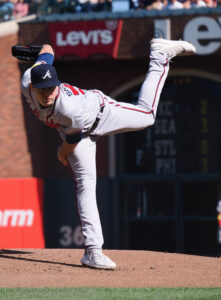The Yankees announced Wednesday that they’ve claimed infielder Braden Shewmake off waivers from the Royals. He’ll bring their 40-man roster to capacity, meaning New York will now need to make a roster move once lefty Tim Hill’s deal is finalized. Kansas City designated Shewmake for assignment last week. They’d claimed him off waivers from the White Sox earlier in the season.
The 27-year-old Shewmake spent the 2024 season with the White Sox after being acquired in the trade that sent left-hander Aaron Bummer from Chicago to Atlanta. The former first-round pick has appeared in parts of two big league seasons but has posted a bleak .118/.127/.191 batting line in 71 plate appearances between the Braves and Sox. He hasn’t offered much more offense in the upper minors, where he’s a .240/.299/.395 hitter in 866 Triple-A plate appearances.
Shewmake clearly doesn’t hit much, but he’s regarded as a surehanded infielder with strong defensive tools at multiple positions. He’s spent the bulk of his career at shortstop but has experience at second base and third base as well. Statcast credits him with better-than-average sprint speed and arm strength, though he’s not plus in either regard.
The addition of Shewmake is a depth play for the Yankees and surely not intended to address the hole in their lineup at either second base or third base (depending on where Jazz Chisholm Jr. plays). Shewmake has a minor league option remaining and could provide depth at multiple spots around the diamond if he sticks on the 40-man roster into the season. However, with a move needed to open space for the aforementioned Hill, Shewmake could find himself designated for assignment once again, with the Yankees hoping to pass him through waivers and keep his glove in Triple-A as a non-roster depth piece.



